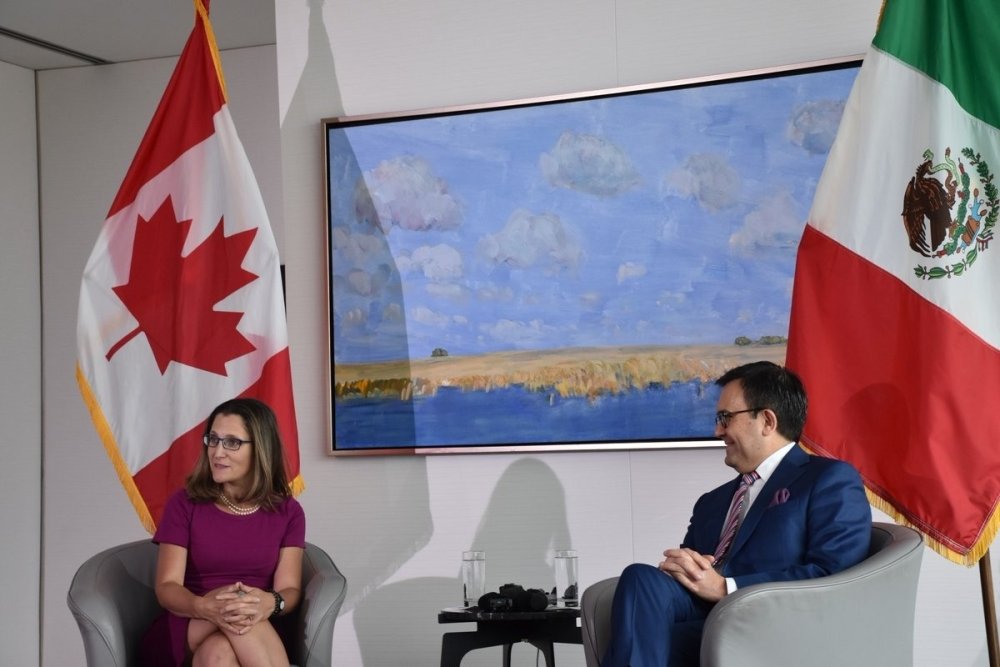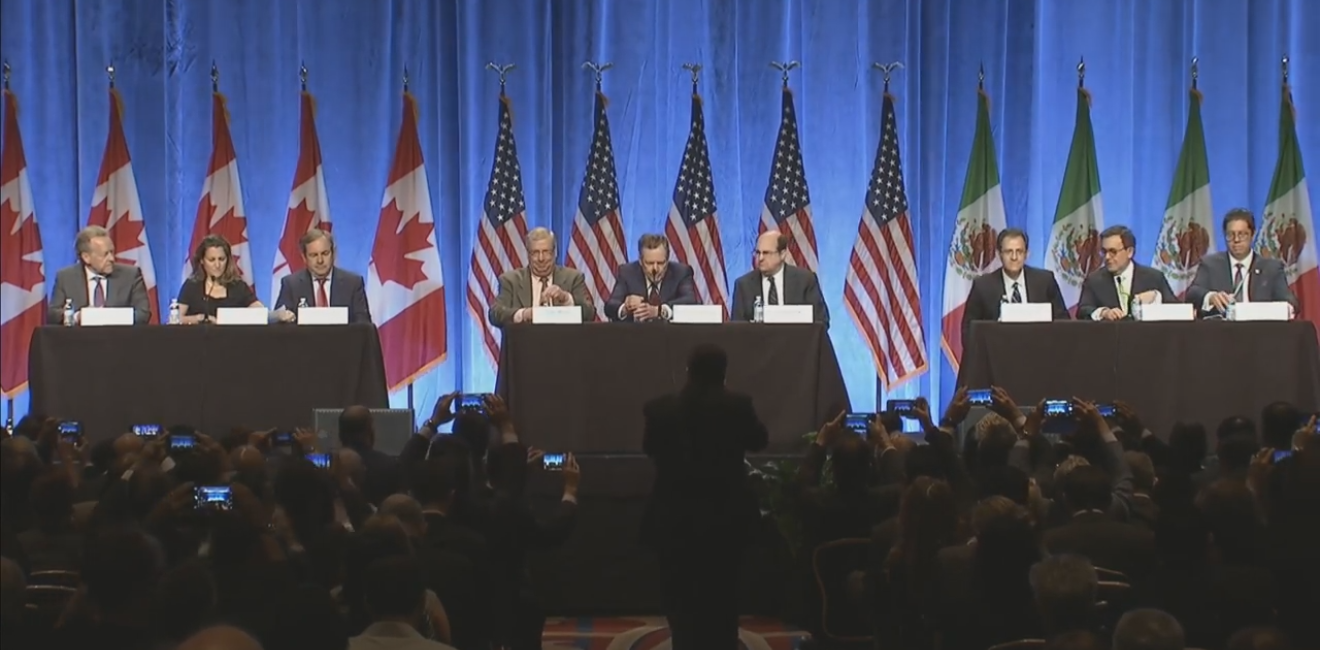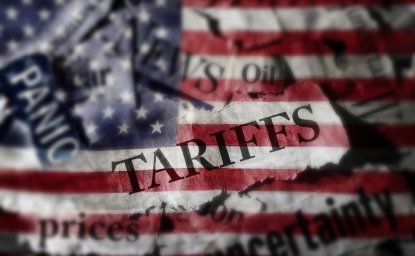It’s NAFTA week in Washington, DC. Negotiations kicked off Wednesday, August 16 at the Marriot Wardman Park Hotel with the lead negotiators for Canada, Mexico and the U.S. delivering prepared remarks.
Canadian Minister of Foreign Affairs Chrystia Freeland and Mexican Minister of Economy Ildefonso Guajardo struck a cooperative tone, but USTR Robert Lighthizer was more provocative. Lighthizer acknowledged that “many Americans have benefitted from NAFTA,” but he also added “NAFTA has fundamentally failed many, many Americans and needs major improvement.”
Lighthizer singled out rules of origin for the auto sector, stating that they “must require higher NAFTA content and substantial U.S. content.” Minister Freeland responded that “Canada is not in favor of specific national content in rules of origin” and Mexico’s Guajardo also criticized the intention to introduce rigidities into the industrial process. As Canadian trade economist, Dan Ciuriak points out, any rules of origin changes that raise the cost of production by 2.5 percent or more could lead automakers to ignore NAFTA entirely and opt for the WTO rate.

As negotiators prepare themselves for a hectic schedule that will include seven rounds of NAFTA talks at three-week intervals, Canada offered a glimpse at its NAFTA strategy earlier this week. Freeland outlined Canada’s negotiating objectives in a speech on August 14 at the University of Ottawa and later appeared with Canada’s chief NAFTA negotiator Steve Verheul in front of the parliamentary committee on international trade.
Here are my 11 takeaways on the negotiations so far, from a Canada perspective:
- Don’t read too much into USTR Robert Lighthizer's provocative messaging on the NAFTA negotiation. That's what he gets paid to do: USTR is part of the Executive Office of the President and one has to expect his comments to reflect the views of his boss. And don't forget that this is a negotiation; initial comments are both maximalist and aspirational. You don't give away your position on the first day. At the same time, the U.S. Congress must ultimately approve the final package, so USTR has the added challenge of managing a negotiation at home as well as with Canada and Mexico. Expect strong public statements to continue from the U.S. while the negotiators, um, negotiate behind closed doors.
- Canada will bring forward a positive agenda on trade focused on modernizing the NAFTA. Important economic gains could be made through enhanced commitments on customs facilitation and digital trade. Regulatory alignment will continue to be an economic priority for Canada but it is not yet clear how much regulatory cooperation will be formally embedded in the NAFTA and how much will be left as a stand-alone initiative.
- Canada is also pitching a values agenda that seeks to expand existing commitments in environment and labor and add new commitments on indigenous, and gender rights. While the introduction of values commitments to trade agreements tends to be slow and incremental, progress is possible. The relatively weak labor commitments of NAFTA 1.0 evolved in the Trans-Pacific Partnership (TPP) to include consensus on core standards and enforcement through a binding dispute settlement mechanism.
- The TPP text provides a source of consensus on modernization issues since Mexico, Canada and the U.S all signed off on a final text before the U.S. withdrew. Expect to see TPP imports in areas such as digital commerce, SMEs, anti-corruption, and currency manipulation. That said, Canada and Mexico are reluctant to automatically import market access concessions from the TPP (such as on Canadian dairy) if it is not advantageous to do so.
- The continuation of a formal energy chapter may be in some doubt. The U.S. is suggesting that since Mexico has opened up its energy sector, the removal of the Mexican exceptions from the chapter will result in a pretty thin text, and energy commitments could be dispersed elsewhere in the agreement. On the other hand, as I wrote in the spring, the energy chapter has been largely problem free. Trilateral energy cooperation is a NAFTA success story at a time when we could use more of them. A renewed NAFTA energy chapter could help to generate greater levels of cooperation across a range of energy sources and generate mutual gains on infrastructure and regulatory alignment.
- While the negotiators have already started to talk about some of the hot-button issues, we should not expect a quick resolution to divisive issues such as the Chapter 19 appeals process. The general rule for trade negotiations is that nothing is agreed until everything is agreed, so interim agreements will not be finalized until the full package is assembled.
- Canada approaches this negotiation in a relatively strong position. It does not have the political pressures weighing it down that Mexico does - with its upcoming presidential elections – or the U.S. with the Congressional midterms. At the same time, NAFTA trade contributes more than 20 percent of Canada’s GDP and NAFTA uncertainties could deter investment and production expansion. Canada has made it clear that it will not accept a NAFTA 2.0 that is worse than NAFTA 1.0, but at the same time, some of Canada’s requests to expand cross-border labor mobility and access to U.S. government procurement are not likely to get much traction in an era of Hire American, Buy American.
- While Canada is not likely to concede on many issues, we should allow some room for Canada’s positions to evolve from the 1994 agreement. New Canadian commitments in intellectual property and dairy market access made in the recent TPP and EU agreement could find their way into NAFTA 2.0
- Completing the NAFTA talks before Christmas is an improbable goal. All three countries have brought robust lists of objectives to the table and the issues are highly technical. The original Chapter 19 negotiations took more than a year to conclude. The recent U.S.– Mexico sugar agreement took two years. Moreover, with just a few days scheduled between rounds, it will be very difficult for negotiators to consult with stakeholders and adjust their mandates, if required.
- Overall Canada’s approach will be to defend and maintain the status quo, while attempting to fulfill a modernization and values agenda that will bring NAFTA into the 21st first century. Canada and Mexico are in close agreement on general principles and so far there are no major divisions on issues between the two. They have agreed to continue the NAFTA with or without the United States.
- Leaving aside complexity and tight timelines, the major challenge in these negotiations are U.S. political divisions. At least four factions are competing for control of the U.S. NAFTA agenda: pro-business internationalists who are seeking to modernize NAFTA to keep pace with global supply chains; rules-oriented mercantilists who want to strengthen U.S. trade protections for traditional commodities such as steel; Trump populists for whom no trade agreement is a good agreement; and the anti-globalist left who, ironically, share many of the trade criticisms as their far right counterparts.
Author

Executive Director, Future Borders Coalition

Canada Institute
The mission of the Wilson Center's Canada Institute is to raise the level of knowledge of Canada in the United States, particularly within the Washington, DC policy community. Research projects, initiatives, podcasts, and publications cover contemporary Canada, US-Canadian relations, North American political economy, and Canada's global role as it intersects with US national interests. Read more


Mexico Institute
The Mexico Institute seeks to improve understanding, communication, and cooperation between Mexico and the United States by promoting original research, encouraging public discussion, and proposing policy options for enhancing the bilateral relationship. A binational Advisory Board, chaired by Luis Téllez and Earl Anthony Wayne, oversees the work of the Mexico Institute. Read more





